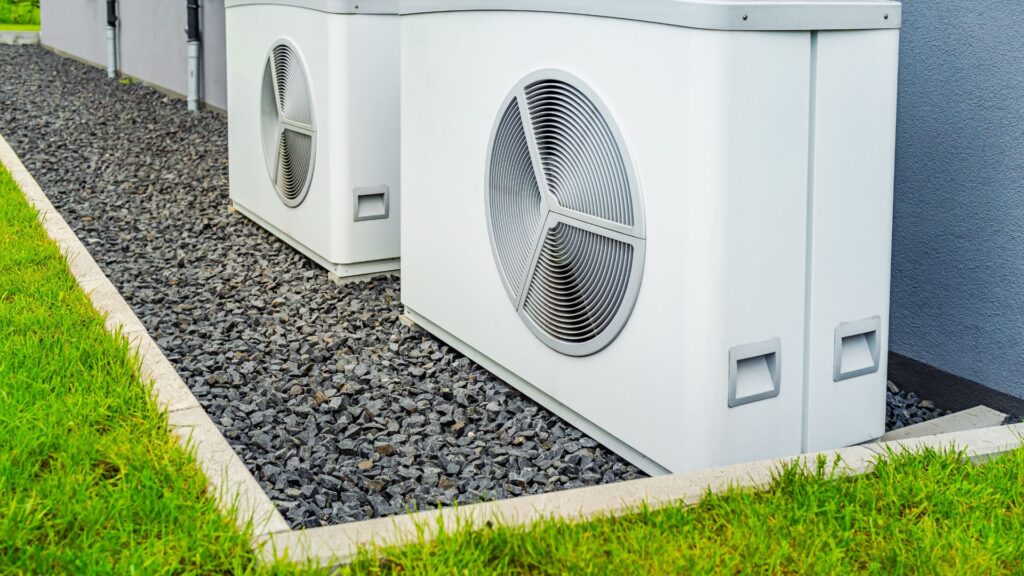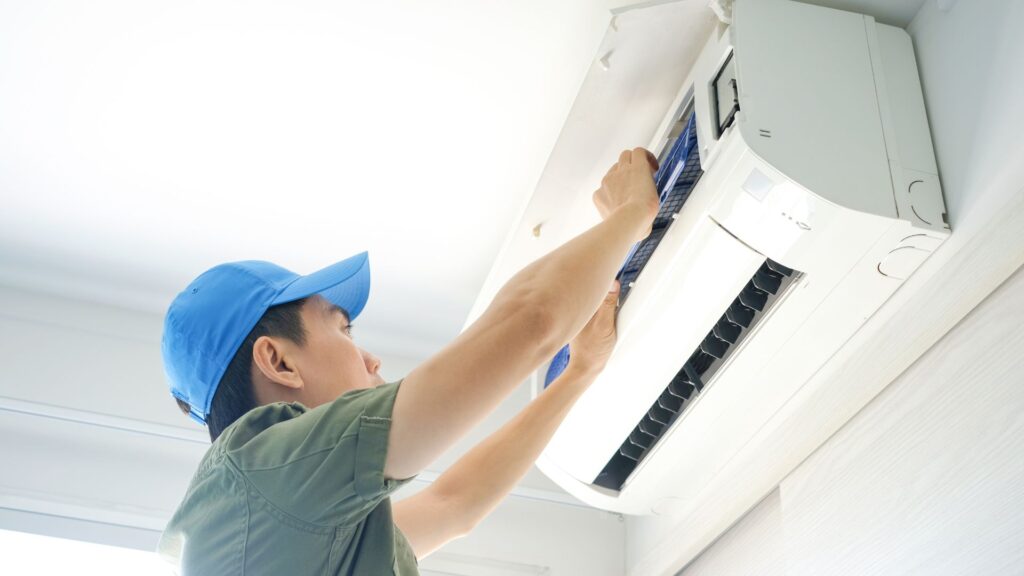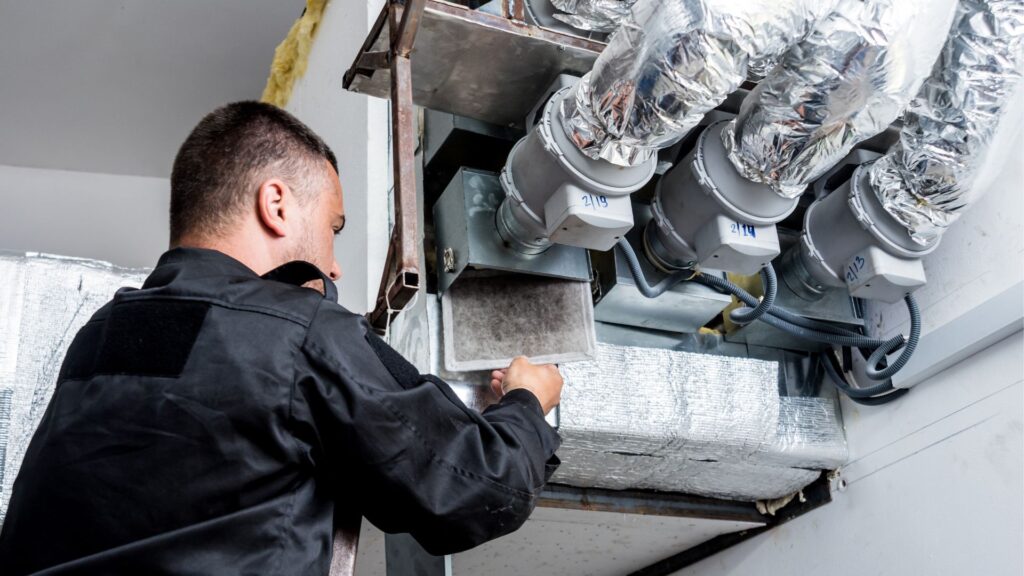“How to Install Heat Strips in Package Unit: A Comprehensive Guide”
Welcome to our comprehensive guide on installing heat strips in package units. Whether you’re a seasoned HVAC professional or a DIY enthusiast, this article will provide you with all the information you need to install heat strips and keep your home comfortable year-round successfully.
Understanding Heat Strips
Before diving into the installation process, let’s take a moment to understand what heat strips are and how they work. Heat strips, also known as electric resistance heating elements, are a common component of package units. They provide supplemental heat when the primary heating system is not sufficient, particularly in colder climates.
Heat strips consist of coils made of high-resistance wire, typically made from materials like nichrome or Kanthal. When electricity passes through these coils, they generate heat through resistance, which is then circulated throughout the air by the unit’s blower motor.

Preparing for Installation
Checking Compatibility
Before purchasing heat strips for your package unit, it’s essential to ensure compatibility by checking the manufacturer’s specifications. These specifications will provide details on the appropriate size and wattage of the heat strips needed for your specific unit. Failure to adhere to these specifications could result in inefficient heating or potential damage to the unit.
Gathering Tools and Materials
Streamlining the installation process begins with assembling all the essential tools and materials in advance. This typically includes screwdrivers, wire strippers, electrical tape, and potentially a voltmeter for thorough testing. Having these items readily available ensures efficiency and minimizes interruptions during the installation procedure.
Ensure safety precautions are in place.
Safety should always be a top priority when working with HVAC systems and electrical components. Before starting the installation, ensure that the power to the unit is turned off and that proper safety protocols are followed. This may include wearing personal protective equipment, such as insulated gloves and safety glasses, and avoiding contact with live electrical components.
Step-by-Step Installation Guide
Turn Off Power
Ensuring safety is paramount when handling electrical components to prevent accidents and injuries. Prior to initiating any installation tasks, it is imperative to cut off power to the package unit at the circuit breaker to eliminate the risk of electric shocks or fires. This precautionary measure provides a safe environment for both the installer and anyone else nearby, adhering to industry-standard safety protocols.
Access Package Unit
To locate the access panel on your package unit, start by inspecting the exterior casing for any visible screws or fasteners. Once identified, use the appropriate tool to remove these fasteners carefully, ensuring they do not damage the panel or surrounding components. With the fasteners removed, gently set the panel aside to reveal the interior components of the package unit, allowing for inspection or maintenance as needed.
Locate the Heat Strip Compartment
Within a package unit, the heat strip compartment is usually situated close to the air handler or blower motor for efficient heating distribution. It serves as a crucial component for heating purposes, especially in systems where electric heat is utilized. Proper maintenance and periodic inspection of the heat strip compartment are essential to ensure optimal performance and prevent potential issues.
Remove Existing Components
When replacing heat strips in a package unit, it’s crucial to handle the removal process with care. Begin by disconnecting all electrical connections and labeling them for later reference, ensuring a smooth reassembly process. With proper attention to detail during removal, you can facilitate the installation of the new components and maintain the unit’s functionality efficiently.

Install New Heat Strips
Proper positioning and alignment
Positioning the new heat strips correctly within the compartment involves aligning them precisely with the designated mounting brackets or slots to ensure secure placement. Proper alignment is crucial for efficient heat distribution and to prevent any potential damage or malfunction. Taking care to follow the manufacturer’s instructions and guidelines will help ensure optimal performance and longevity of the heat strips.
Secure connections
To ensure secure electrical connections between the heat strips and the unit’s wiring, carefully follow the wiring diagram provided by the manufacturer, ensuring proper alignment of wires according to color codes and terminal designations. Use appropriate tools such as wire strippers and crimp connectors to securely attach the cables, making sure there are no loose connections or exposed conductors. Finally, a thorough inspection is performed to confirm all connections are snug and insulated to prevent any risk of electrical hazards or malfunctions.
Connect Wiring
To begin, carefully use wire strippers to remove the insulation from the ends of the wires on both the heat strips and the unit. Refer to the manufacturer’s wiring diagram for guidance on how to connect the cables correctly, usually employing wire nuts or terminal connectors. Ensuring accuracy in wiring is crucial for the heating unit’s proper functionality and safety.
Replace access panels
After installing and connecting the new heat strips, it’s essential to replace any access panels or covers that were previously removed to ensure the interior of the package unit is securely enclosed. This step helps to protect the components inside from dust, debris, and potential damage. Properly securing the unit also maintains its efficiency and prolongs its lifespan.
Testing and Finalization
Restore power to the unit.
After successfully finishing the installation process, it’s crucial to restore power to the HVAC unit to ensure its functionality. This can be achieved by simply flipping the circuit breaker switch back to the “on” position. Once power is restored, the HVAC system should resume regular operation, providing heating, ventilation, and air conditioning as needed.
Test the heat strips for proper function.
To activate the HVAC system’s heating function, locate the control panel or thermostat and set it to the desired temperature. Once activated, the newly installed heat strips should begin operating, providing warmth throughout the space. While the system is running, please pay close attention to any unusual noises or odors, as they could signal a potential issue with the installation or operation of the heat strips.
Check for any leaks or loose connections.
When inspecting the area around the heat strips and connections, look for any indications of leaks or loose electrical connections, such as moisture, corrosion, or frayed wires. Addressing these issues promptly is crucial to prevent potential damage to the heating system or even safety hazards like electrical fires. Regular maintenance checks are conducted to ensure the proper functioning and safety of the heating equipment.
Verify overall unit operation.
To verify the HVAC unit’s overall functionality, start by testing the heating function. Set the thermostat to a higher temperature and observe if warm air is consistently produced while also checking for any unusual noises or odors. Then, repeat the cooling function process by setting the thermostat to a lower temperature and ensuring that cool air is being circulated effectively throughout the space. Additionally, the airflow and temperature levels in different areas should be monitored to confirm that the HVAC system is operating optimally.

FAQs: How to Install Heat Strips in Package Unit
How long does it take to install heat strips in a package unit?
The installation process typically takes a few hours, depending on factors such as the complexity of your unit and your level of experience.
Can I install heat strips in my package unit myself, or should I hire a professional?
While DIY installation is possible for those with experience working with HVAC systems, it’s always recommended to consult a professional if you need more clarification. Improper installation can lead to safety hazards and decreased efficiency.
What size heat strips do I need for my package unit?
The size of the heat strips needed depends on factors such as the size of your unit and your heating requirements. Refer to the manufacturer’s specifications for guidance.
Are heat strips energy-efficient?
Heat strips can be energy-efficient when used judiciously to supplement primary heating systems. However, they can also consume a significant amount of electricity if used excessively.
Can I use heat strips as the primary heating source for my home?
While heat strips can provide supplemental heat, they are only typically designed to serve as the primary heating source for some homes. Consult with an HVAC professional to determine the most effective heating solution for your needs.
What maintenance is required for heat strips?
Regular maintenance, such as cleaning the coils and inspecting for any signs of wear or damage, can help ensure optimal performance and longevity of your heat strips.
Conclusion
Installing heat strips in a package unit is a manageable task that requires the proper knowledge and preparation. By following the steps outlined in this guide and consulting with a professional if needed, you can ensure a smooth and successful installation process.
Remember, safety should always be your top priority when working with electrical components. If you’re ever unsure about any aspect of the installation process, feel free to seek guidance from a qualified professional.
With your new heat strips installed, you can enjoy enhanced comfort and efficiency in your home, even during the coldest months of the year.
